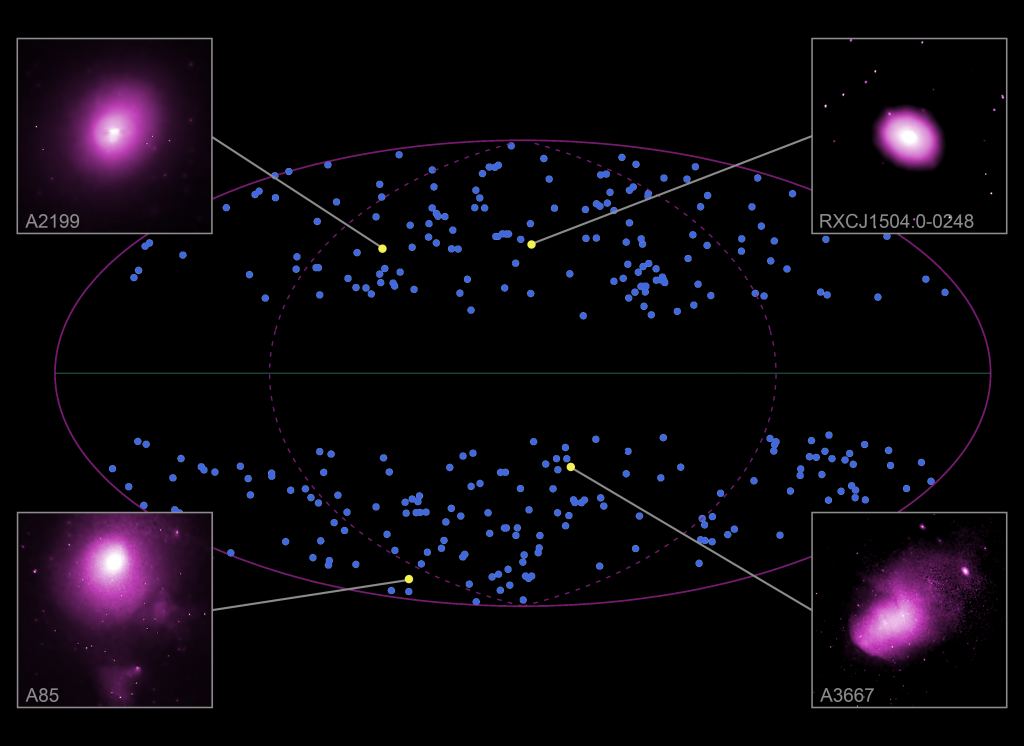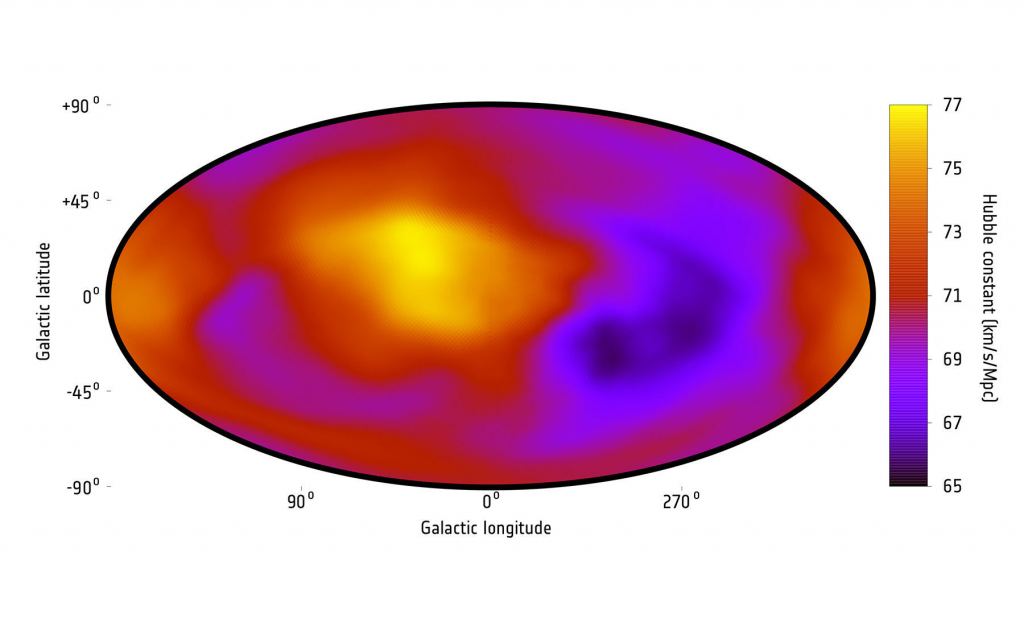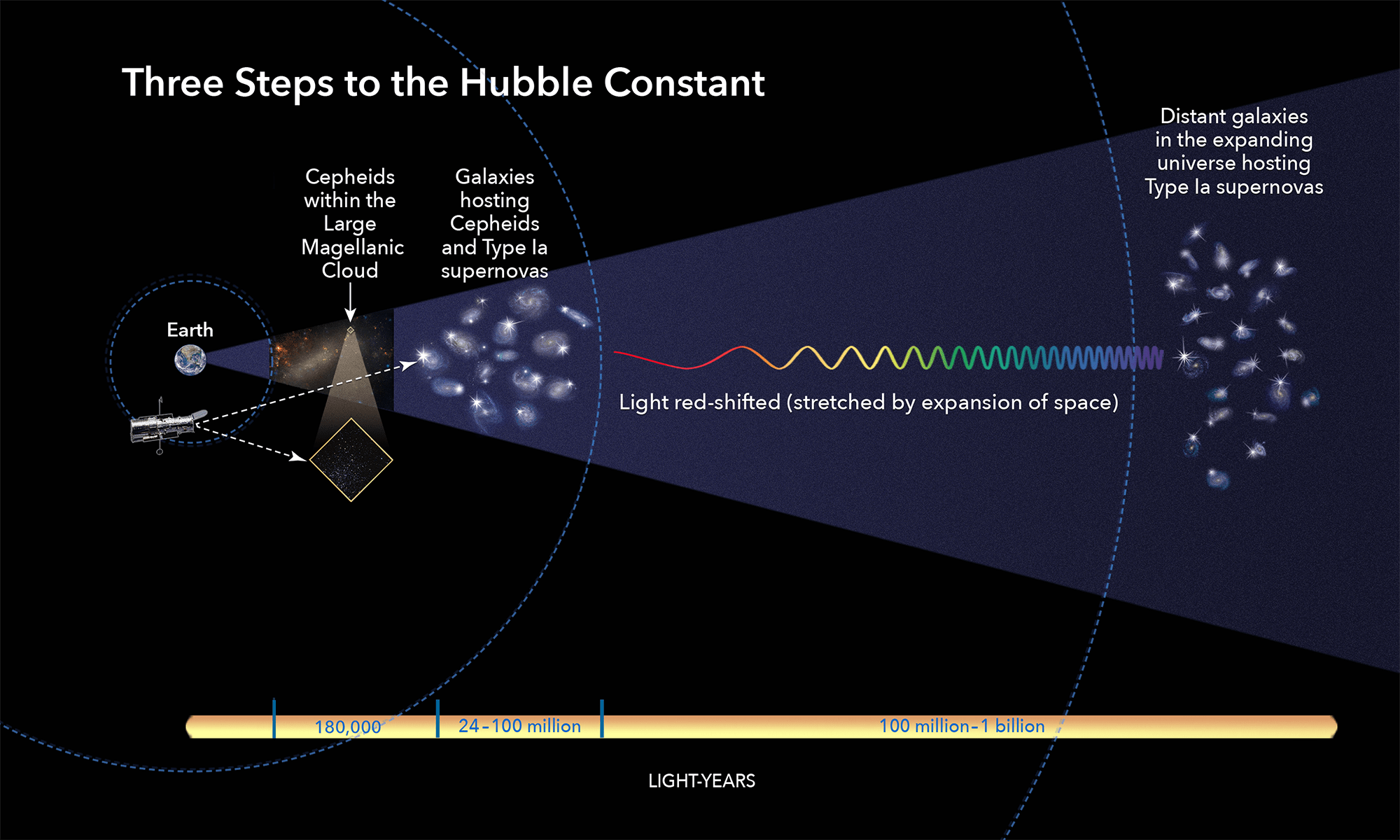When we look at the world around us, we see patterns. The Sun rises and sets. The seasons cycle through the year. The constellations drift across the night sky. As we’ve studied these patterns, we’ve developed scientific laws and theories that help us understand the cosmos. While our theories are powerful, they are still rooted in some fundamental assumptions. One of these is that the laws of physics are the same everywhere. This is known as cosmic isotropy, and it allows us to compare what we see in the lab with what we see light-years away.

While isotropy is a general assumption, that doesn’t mean we can’t test that assumption. As we’ve sent space probes throughout our solar system, we’ve found that the laws of gravity and electromagnetism work on distant planets exactly the way they work on Earth. When we observe distant galaxies, we see the same type of behavior. We’ve even shown that physical constants such as the speed of light are the same. Isotropy is a good working assumption.
But we could still be wrong, as a recent study of distant galaxy clusters suggests.
The study looks at distant galaxy clusters. When we look at these clusters, we find they are speeding away from us. The more distant the galaxy, the faster it appears to be moving. This is true for galaxy clusters in every direction we look. This is consistent with a cosmic expansion driven by dark energy.
Dark energy is even more mysterious than dark matter, so we aren’t sure what it is. The most popular idea is that dark energy is an inherent property of spacetime. Within general relativity, spacetime can be given a cosmological constant that causes space to expand over time. The idea was first proposed by Einstein to prevent the universe from collapsing under its own gravity and later discarded the idea. But it was revived when the universe was seen to be expanding.

The cosmological constant is popular because it doesn’t require some undiscovered exotic stuff to be scattered across the cosmos. It also supports cosmic isotropy. If dark energy is caused by a cosmological constant, and if the matter in the universe is spread out pretty evenly (which it seems to be) then we should see the universe expand equally in all directions. Stated another way, the Hubble parameter (the rate of expansion we measure) should be isotropic. Previous studies of cosmic expansion have supported this, which is why it’s often called the Hubble constant.
This new study looked at cosmic expansion by observing hot gas within galaxy clusters. This gas emits powerful x-rays, and by observing the spectrum of these x-rays the team could calculate the temperature of the gas. The higher the temperature, the brighter the gas. By measuring the gas temperature the team could determine how much x-ray light it emits. This is true regardless of how the universe is expanding.

But then the team compared the actual brightness of the gas in these galaxy clusters with their apparent brightness. From this, they could measure the Hubble constant in the direction of the galaxy cluster. They did this with hundreds of clusters all over the sky, and the result they got depending on the direction they looked. Based on this research, the universe is not isotropic. If this is true, we need to take a serious look at the basic assumptions of cosmology.
There are several reasons to be cautious about this result. To begin with, if this non-isotropic behavior held across the entire universe, its effect should be seen in the cosmic microwave background (CMB). Since the CMB doesn’t show this effect, this could be a local property. Local in this case is about 5 billion light-years. There could also be issues with the calibration of the data that needs to be resolved.
It is a tentative result, but other research has hinted at a similar non-isotropy across the cosmos. This is definitely something we want to investigate further.
Reference: Migkas, K., et al. “Probing cosmic isotropy with a new X-ray galaxy cluster sample through the LX? T scaling relation.” Astronomy & Astrophysics 636, A15 (2020).


These types of anisotropies in isolated data sets have been reported numerous times, and the uniform LCDM cosmology has survived. The main reason is that integrated data syntheses such as the Planck group do removes or alleviate them.
While it is technically true that the data probe further out, the main data is extremely local, < 1 Glyrs radius (z < 0.1). It is mostly < 10 % nonuniformity and less than the necessary 5 sigma significance at that. They will add more data, which presumably will move the probe further out as well, which will be interesting.
A much stronger criticism here: https://www.forbes.com/sites/startswithabang/2020/04/10/new-study-challenging-the-universes-expansion-deserves-lots-of-skepticism/#497e7c384441 .
[After a detailed criticism on method and some foreground it doesn’t seem to remove:]
“But this new study is only a clue in that direction, one with many reasonable objections. The sample size is small. The correlation used is new and its universality is dubious. Foreground effects are not sufficiently modeled. And the data itself could be a lot better.
Although the authors look to upcoming eROSITA data as the next step along this path, they should be looking farther afield. A truly next-generation X-ray observatory, like ESA’s Athena or NASA’s Lynx, is the tool really needed to gather the decisive data, along with complementary large-field, deep optical surveys that we’re expecting from ESA’s Euclid, NASA’s WFIRST, and the Vera Rubin Observatory’s LSST.”
This article really ended on a cliffhanger. When I first read it, the most logical assumption to me is that the data is correct, and it supports the idea that we are not at the “center” of our expanding universe, i.e. the Big Bang set the universe expanding, but if we are located at a point not at the center of expansion, it will look different in different directions, as the rates of expansion will be slightly different.
It appears that’s the exact thing these astronomers are observing.